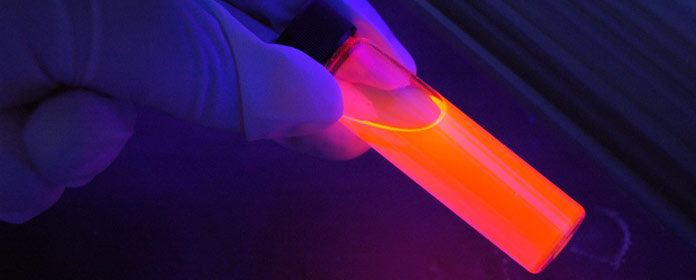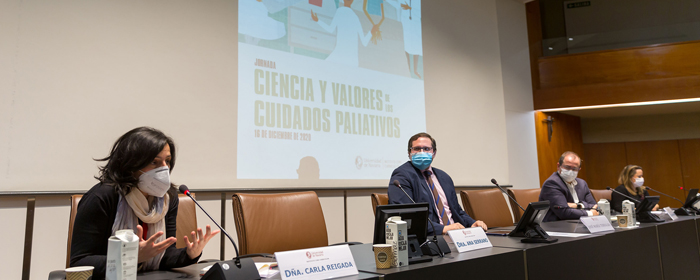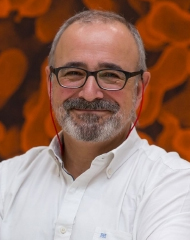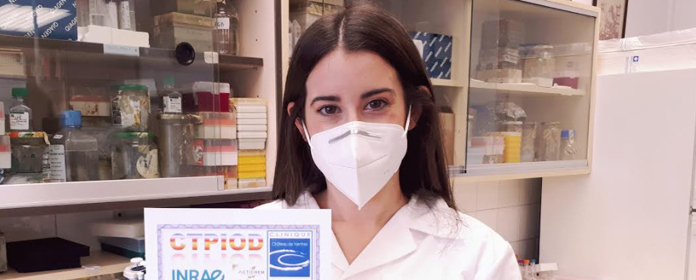"It will soon be possible to obtain information such as skin, hair or eye color after analyzing certain traces or biological fluids."
Manuel Crespillo, forensic biologist, uncovers the truths and banishes the myths of this specialization program in a talk for students of the School of Sciences.

Manuel Crespillo Márquez, head of the Biology Service of the National Toxicology and Forensic Scienceshigh school (Ministry of Justice) of the department of Barcelona since 2014, gave last Friday, February 23 a lecture on the specialization program of Forensic Biology invited by the high school Official Biologists in the classroom 3E02 of the School of Sciences.
In this interview he reveals some of the topics he will discuss in his lecture and explains how database DNA currently works in Spain, which continuously conserves and compares the information of 420,000 genetic profiles with the goal to facilitate investigations into different crimes.
In what areas would you say, as an expert, has forensic Genetics evolved the most in recent years?
Advances in the field of forensic Genetics have focused on the development of analysis strategies aimed at obtaining more information from smaller and smaller amounts of biological material. For example, several groups are currently working actively on the development and fine-tuning of genetic marker panels oriented to the deduction of phenotypic traits. In this way, from a trace or biological fluid we will be able to extract information about the color of the skin, hair or eyes of the individual who has deposited a certain trace or biological fluid.
Do you consider that series such as CSI have contributed to make your specialization program known or do you think that they have rather spread many concepts that are erroneous?
Although I confess that I have seen the series on a few occasions, I believe that this format subject has helped to disseminate applied science in a simple way, making it understandable to the viewer and the general public. Logically, this forces us to simplify the methods, analysis strategies and even the difficulties that we encounter in real life.
What major problems do you encounter in your day-to-day work when it comes to providing data for a crime scene, for example?
Our major drawbacks are often related to having evidence of poor quality or quantity. For example, if we have only one hair or a very small sample of a biological liquid, it is very difficult to obtain a genetic profile that can be compared. The next step, which would be to interpret the result of a genetic analysis in the context of a research, is not easy either. In this field, bioinformatics is making the work of matching data much easier.
Do you think that the role of genetic analysis has been overestimated within the forensic specialization program ?
The employment of genetic analysis has been a real revolution worldwide in judicial processes of different kinds, although its role ultimately depends written request on the courts of justice, which give the corresponding value to the expert analysis. Our work, as forensic biologists, is to contribute to the clarification of the facts under investigation, and in this sense it should be noted that Spanish laboratories work according to very demanding quality standards. In addition, experts from different disciplines (anthropologists, criminologists, entomologists, etc.) frequently participate in the investigations, and their work provides greater consistency to the conclusions of the research.
How are instructions of data of DNA with criminal interest managed in Spain?
Currently, the DNA base data is fed by genetic profiles (approximately 420,000 as of 2016) from biological evidence that has not been attributed to any donor and profiles of suspects (investigated or convicted) for particularly serious crimes, as well as cadaveric remains and samples from people looking for a missing relative.
These genetic profiles are collected by the various police and experts from the high school National Toxicology and Forensic Sciences. They then work with a computer software (CODIS) that submits all the profiles to a continuous process of comparison, so that, in the event of a possible coincidence of profiles, the relevant court is informed. This procedure of exchange and comparison of genetic profiles is also carried out at international level with different European countries.




